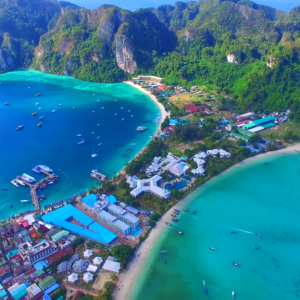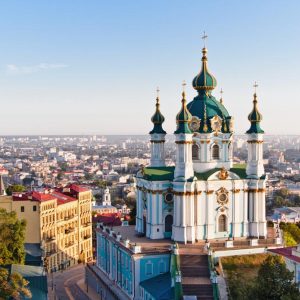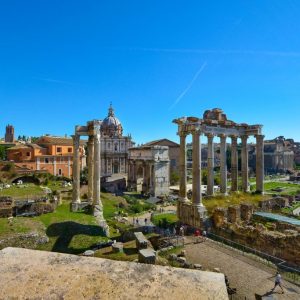Contents
 100vw, 696px” data-lazy-src=”https://vtechcon.site/wp-content/uploads/2023/10/fea-12-696×400-1.jpg” /><img decoding=)
Most islands are safe as a vacation destination or even a home. However, there are some islands that are not even safe to even go near whether it be because of the residents or a natural occurrence. To help you steer clear of danger, here are the top 10 most dangerous islands on the planet.
1. North Sentinel Island, Andaman Islands

North Sentinel Island is the home of the Sentinelese tribe. This tribe’s only weapons are spears and bows and arrows. The government of India, which controls the island, has deemed them the fiercest group of people on the planet.
Sea travel within five nautical miles is prohibited. The Indian government has also banned anyone from ever going within 3 miles (4.83 kilometers) of its shores. Following a 2000 tsunami, the authorities attempted an emergency food drop, but the mission was aborted after the helicopter was attacked.
2. Ilha de Queimada Grande Island, Brazil
 100vw, 680px” data-lazy-src=”https://vtechcon.site/wp-content/uploads/2023/10/2wwiki.jpg” /><img decoding=)
Indiana Jones would not like this place. The island of Ilha de Queimada Grande is also known as Snake Island for a reason. Located off the coast of Brazil, this small isle is only 43 hectares (106+ acres).
Experts estimate that there are approximately five golden lancehead viper snakes per square foot of the island. Lancehead snakes are reported to be responsible for more deaths than any other snake in both North and South America. To date, there’s no known antivenom so avoiding this place is a good idea.
3.Papua, New Guinea
 100vw, 480px” data-lazy-src=”https://vtechcon.site/wp-content/uploads/2023/10/3-12.jpg” /><img decoding=)
New Guinea is really a nice place to visit, but you sure wouldn’t want to be in Papua. Until 1974 the natives didn’t even know that people from other places weren’t members of rival tribes. These people live their lives in treehouses constructed roughly 140 feet high to avoid being attacked. Those who stumble into their territory are generally met with a rather long barbed arrow pointed at them until they turn themselves around and walk in the other direction. This tribe has a history of cannibalism and may still eat invaders.
44. Gruinard Island, United Kingdom
 100vw, 696px” data-lazy-src=”https://vtechcon.site/wp-content/uploads/2023/10/4wiki-1-696×446-1.jpg” /><img decoding=)
People are no longer banned from Gruinard Island, but they still stay away from the place. Brit scientists were researching anthrax there in 1942. In the process, they transported 50 sheep to this remote isle off the Scottish mainland.
The sheep were bombed with anthrax. They all died within two weeks. It was not until afterwards that the scientists soon realized they could not remove the anthrax from the soil there. Thus, they put a 50-year ban on the isle. Three Russian aristocrats recently expressed an interest in purchasing it.
5. Saba Island, Netherlands
 100vw, 696px” data-lazy-src=”https://vtechcon.site/wp-content/uploads/2023/10/5wik-696×479-1.jpg” /><img decoding=)
Despite that, the residents of Saba Island continue to welcome travelers to their island. Just be sure to avoid visiting during hurricane season. (Oh! Did we mention place also has one of the world’s most dangerous airports?)
6. Izu Islands, Japan
 100vw, 696px” data-lazy-src=”https://vtechcon.site/wp-content/uploads/2023/10/6-13-696×463-1.jpg” /><img decoding=)
7. Bjornoya, Svalbard, Norway
 100vw, 324px” data-lazy-src=”https://vtechcon.site/wp-content/uploads/2023/10/7wiki-1-1.jpg” /><img decoding=)
This would be a hard place to grow enough food to sustain oneself because the land is too rocky. This is a difficult place to even moor a boat due to all the huge cliffs along the coastline. But what makes it dangerous is that a Soviet nuclear submarine sank roughly 100 nautical miles southwest of this spot in 1989 and leaked radioactive material into the water. This may have damaged the island’s soil too. Additionally, experts think that the development of the Snøhvit gas field has also forever altered the climate.
8. Farallon Islands, USA
 100vw, 696px” data-lazy-src=”https://vtechcon.site/wp-content/uploads/2023/10/8wiki-1-696×459-1.jpg” /><img decoding=)
Some sources claim the USA buried approximately 47,500 55-gallon drums full of nuclear waste on the Farallon Islands not far from San Francisco , California. Government sources state the specific location of all the barrels is unknown but reports that a number of them were buried underwater around the islands. Scientists believe that finding and removing all of these barrels would actually do more damage than leaving them in the ground. What’s worse is that a US Naval ship that could have been radioactive was also buried close to these islands.
9. Bouvet Island, Norway
 100vw, 696px” data-lazy-src=”https://vtechcon.site/wp-content/uploads/2023/10/wiki-696×462-1.jpg” /><img decoding=)
Bouvet Island is located 1,1000 miles north of Antarctica. It’s the world’s most remote island. More than 93 percent of this 119-square-mile isle is always covered by a glacier.
Only six people live here and they work for the Norwegian Weather Service. They work there for two to four months at a time. In an emergency, help would be slow in arriving as there’s only one reliable place to moor a boat.
10. Mergui Archipelago, Myanmar
 100vw, 680px” data-lazy-src=”https://vtechcon.site/wp-content/uploads/2023/10/10wik-1.jpg” /><img decoding=)
The Mergui Archipelago is made up of 800 small islands.
It’s situated between Myanmar (Burma) and Thailand. The islands are largely uninhabited.
The native Moken Tribe survives solely by fishing. They actually live on large wooden boats they consider their homes. Strangers who approach them will be greeted with a hail of fire arrows. Thus, the nearby governments recommend that tourists avoid the area. Sadly, the tribe is now struggling to survive but neither of the local governments is willing to aid them in acclimatizing to our modern society.
So beware! Not all natives are friendly. Not all islands are a paradise.



